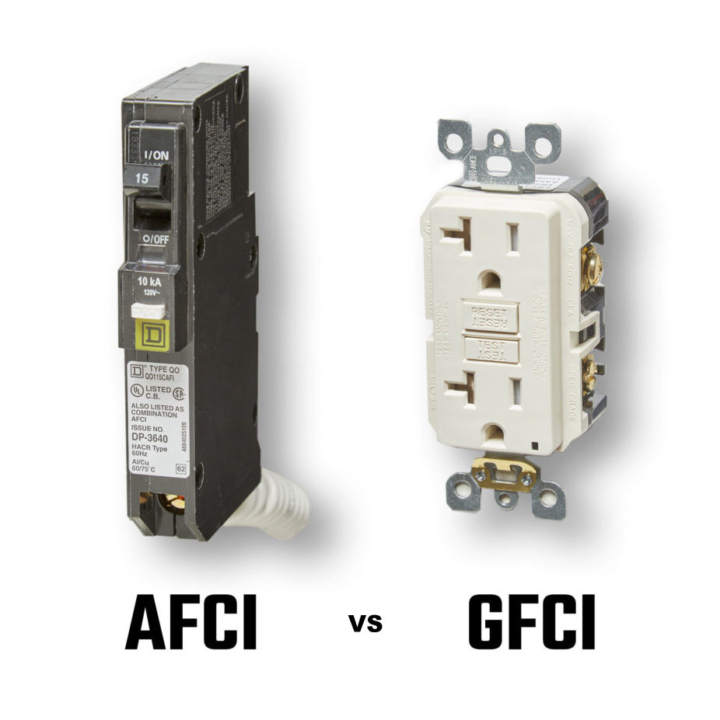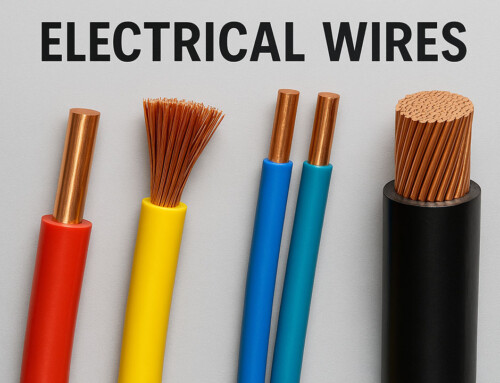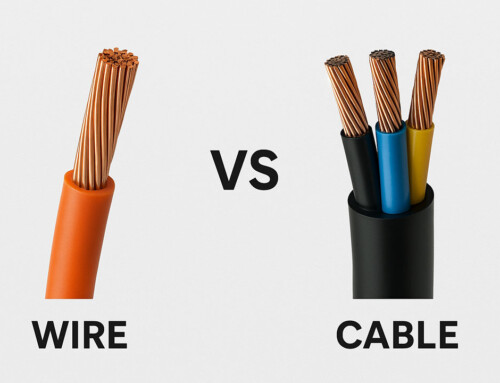Table of Contents
eyWhile standard circuit breakers offer a basic level of electrical fire protection, there are two more electrical circuit interrupters on the market that offer enhanced protection from arcing and ground-faults: AFCI and GFCI. Both these outlets are important equipment to any home or office’s electrical system in terms of functionality and are absolutely essential for safety.
What does an AFCI do?
AFCI devices use advanced technology to continuously monitor the electricity flow in the circuit, and if it detects any unwanted arcing signatures, it de-energizing the electricity immediately. In short, AFCI protection is about preventing electric fire.
What does a GFCI do?
Ground-fault circuit-interrupter (GFCI) protection is designed to keep people safe from fatal electrical shocks. When an electric current to ground exceeds a certain value, the GFCI breaker de-energizes the electricity immediately.
An electric current of approximately 10 milliamps (.010) is lethal enough to cause death in humans. GFCI outlets are designed to stop the electric flow in the range of 4 milliamps (.004) to 6 milliamps (.006). So, the GFCI breaker is all about preventing electric shocks and saving lives.
AFCI vs. GFCI
The basic difference between AFCI and GFCI is AFCI trips when it detects dangerous electrical arcing faults to prevents electric fire whereas GFCI trips when the electric current to ground exceeds a certain value. It protects people against fatal electric shock.
Where should we use AFCI and GFCI circuit breakers?
Where to use AFCI protection?
AFCI protection has to be installed at the electrical panel. They have to be installed in readily accessible locations for easy operation, renewal, or inspection. It’s protection must be present in the following rooms in one and two-family homes and multifamily buildings:
- Family Rooms
- Kitchens
- Living Rooms
- Dining Rooms
- Libraries
- Parlors
- Bedrooms
- Dens
- Recreation Rooms
- Sunrooms
- Closets
- Laundry Areas
- Hallways
It’s important to note that AFCI protection is required in any of the rooms or areas mentioned above where branch-circuit wiring is modified, replaced, or extended.
Note: Refer to the NEC for a complete list of locations where AFCI protection is required.
Where to use GFCI devices?
GFCI devices are required to be installed in locations that are readily accessible. That means they should be placed in locations where they can be easily and quickly reached for renewal, operation or inspection.
The following is a list of locations where GFCI is required in one, two-family homes and multifamily buildings:
- Garages, and buildings that have the floor located at or below grade level that is used for storage or as a work area
- Bathrooms
- Crawl spaces at or below grade level
- Outdoors
- Unfinished portions of basements not intended as habitable rooms
- Sinks
- Kitchens
- Bathtubs and shower stalls
- Boathouses
- Laundry areas
- Kitchen dishwashers
- Boat hoists, for outlets not exceeding 240-volts
- Crawl space lighting outlets
Note: Refer to the NEC for a complete list of locations where GFCI protection is required.
AFCIs and GFCIs are essential devices to the overall electrical system that ensures safety to your home or business. At D&F Liquidators, we can help with all you AFCI and GFCI needs, whether you are a business that wants to make sure you are in compliance with the code or a homeowner making sure that your family is safe and protected.
D&F Liquidators has a large inventory of electrical supplies, circuit breakers, and safety switches. Contact us at 800-458-9600 for reliable electrical materials from top brands at competitive rates.






